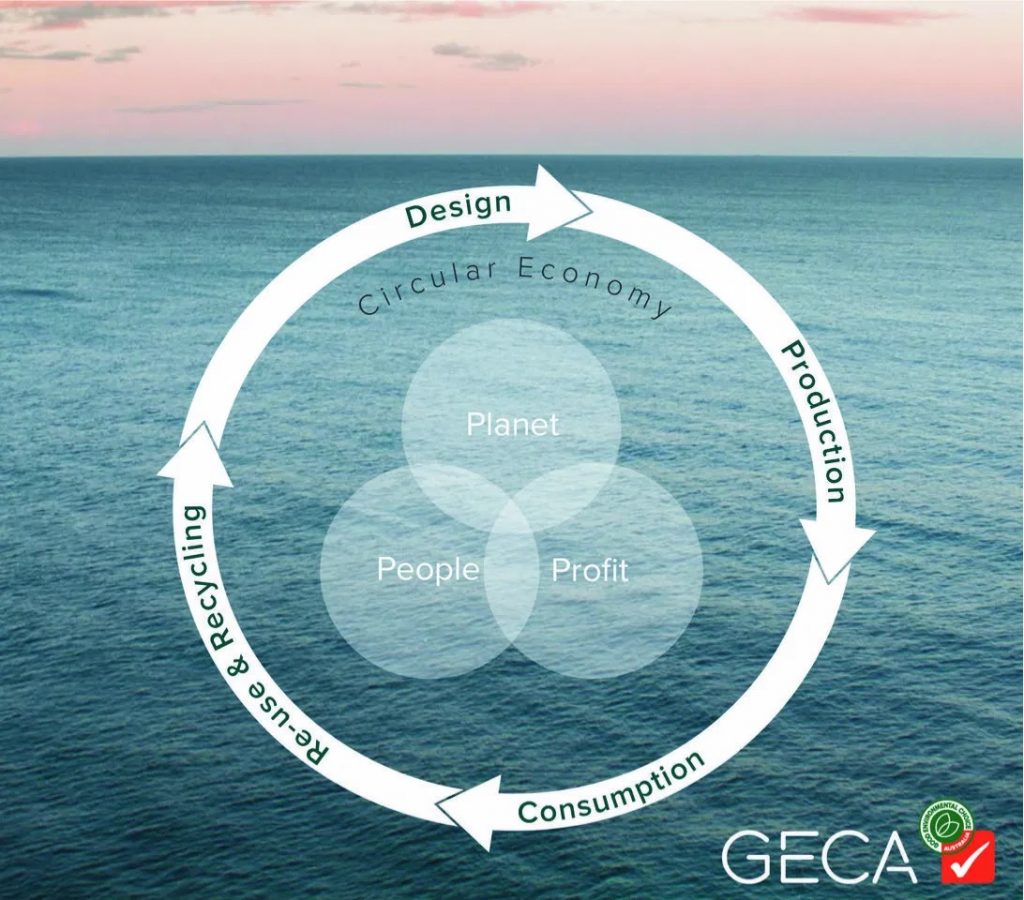When choosing flooring, it’s not always easy to decipher what is greenwash and what is a better choice! To make it easier, we want to share what to look for in flooring to ensure a GOOD outcome for people and planet.
But first, what makes GECA qualified to define what is GOOD? Our rigorous lifecycle ecolabel standards follow ISO 14024 principles for global best practice. These standards are then assessed independently by our third-party Assurance Providers. GECA is also the only Australian member of the Global Ecolabelling Network (GEN).
We have an array of flooring products to choose from, certified under our Floor Coverings, Hard Surfacing, Carpets and Adhesives, Fillers & Sealants standards.

So, what are some of the questions and considerations to make when it comes to flooring products?
The main environmental impacts come from the different types of raw materials used, products for surface treatment and glue, and the energy used during manufacturing. Flooring can also affect indoor air quality if it emits volatile organic compounds (VOCs), triggering respiratory conditions.
Fit for purpose
It’s essential to make sure that any flooring product you choose is fit for its intended purpose. In addition, it needs to comfortably withstand the expected amounts of foot traffic in the installation area – flooring that needs replacement every couple of years is not a great solution, environmentally speaking. It also needs to be easy to clean and have a good manufacturer warranty.
Social impact
Nothing is truly sustainable if it only looks at the impacts on the environment and ignores the treatment of people. Exploitation can occur in many ways, such as unsafe work conditions or little to no pay. Modern slavery is a term used to cover a range of exploitative practices, including slavery, human trafficking, child labour and forced labour.
Adhesives, fillers, and sealants
Adhesives, fillers and sealants are typically used for flooring products and installation. Yet, they can also be one of the most commonly overlooked materials regarding their sustainability credentials. VOCs are a big issue for adhesives and can trigger respiratory irritation, allergies, headaches, and asthma. Formaldehyde, a known human carcinogen, is a particularly common VOC found in adhesives and resins, despite its toxicity to humans. Titanium dioxide, zinc oxide and lithopone are a few examples of compounds often found in adhesives. The production of these compounds uses large amounts of energy, generates high volumes of waste, and results in air and water emissions.
With so many different criteria to consider, it can seem overwhelming. Further, each type of flooring material, such as timber, tiles, stone, rubber, carpet, linoleum, cork, and vinyl, all have their own specific criteria and impacts to consider.
We’ve taken the hard work out of making a better choice for people and planet! Our ecolabelling scheme looks at the potential environmental, health, and social impacts while also ensuring that the product is fit for purpose. We do this to provide you with an independent, reliable, and credible way to make a better choice.
We will dive deeper into some of the specific considerations for different flooring materials in future articles here on our blog; now, let’s take a closer look at carpet.
How to choose a better carpet
When you’re looking at the sustainability of a carpet, you need to look at the product’s entire lifecycle. That means from sourcing of the raw materials to manufacturing, installation, use and maintenance, and finally, its ultimate disposal. This applies to all components of the carpet system, including:
• the fibre,
• the backing or padding material, and
• the glues and adhesives used for binding.
Answers to questions such as “synthetic or natural fibres?” or “what chemical treatments have been used?” aren’t necessarily as clear-cut as they might appear.
Natural fibres, like wool, are not always necessarily better than synthetic fibres from an environmental perspective. Wool fibres can be treated with solvents and detergents during processing, and effluent from scouring operations can contribute to water pollution if it isn’t properly treated.
However, natural fibres may have natural stain resistant properties, eliminating the need for nasty stain-repellent chemical treatments, and should only emit low amounts of VOCs. Natural fibres are also renewable resources and biodegradable.
During manufacture, synthetic fibre production can result in the release of sulphur or nitrogen oxides into the atmosphere, contributing to air pollution. The foam used for carpet backing may also have been manufactured using ozone-depleting chemicals or may present a risk to human health by including potentially carcinogenic compounds such as 1,3-butadiene.
There are also chemical treatments and dyes to consider. Stain-repellent and fire-retardant treatments typically contain a class of compounds called polybrominated diphenyl ethers, or PBDEs, which have been found in measurable levels in human blood and breast milk. They’ve been linked to thyroid and hormone disruption, and other chemicals classed as flame retardants have been linked to cancer.
If a carpet has reached the end of its life, it should ideally be recyclable. The backing should be easily separable from the rest of the carpet, and the manufacturer or retailer should have take-back or recycling schemes in place for their products.
On our website product database, you can find GECA certified carpet by Shaw Contract Group, RC&D and Modulyss. You can also discover other flooring products by Gerlfor, Spectrum Floors, REGUPOL Australia and Forbo Flooring Systems. And our licensee, Alseal, has a certified flooring adhesive. And if your favourite product is not listed, why not ask them to get GECA certified!
And if your favourite product is not listed, why not ask them to contact us and get GECA certified!
**
A modified version of this article was first published in the April/May 2021 issue of Flooring Magazine.
Feature image is GECA certified Dusk 1 by Modulyss.



























